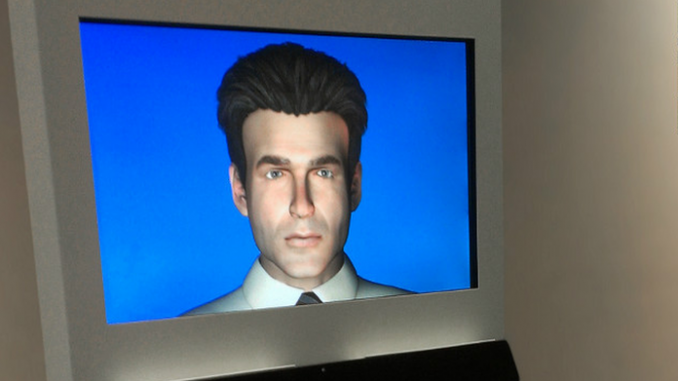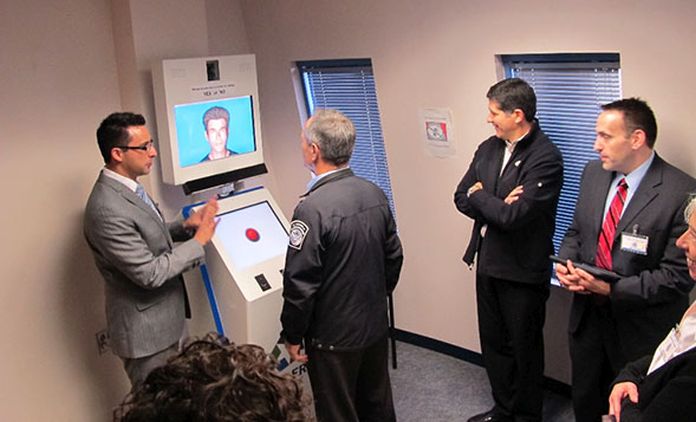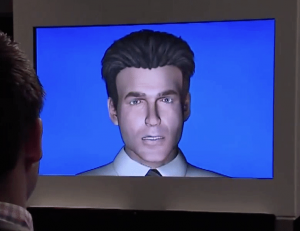
In the future you may have to convince a computer that you are telling the truth at airport security checkpoints.
A robotic kiosk will ask travellers a series of questions and report those who pose a potential security risk to human authorities for further investigation.
The virtual border agent can detect changes in physiology and behaviour during interviews with travellers.

BYPASS THE CENSORS
Sign up to get unfiltered news delivered straight to your inbox.
You can unsubscribe any time. By subscribing you agree to our Terms of Use
Latest Video
The system is called AVATAR and is currently being tested in U.S. and Canada.
An SDSU professor is developing a robotic kiosk that could help detect travelers with sinister intentions.

When you engage in international travel, you may one day find yourself face-to-face with border security that is polite, bilingual and responsive—and robotic.
The Automated Virtual Agent for Truth Assessments in Real Time (AVATAR) is currently being tested in conjunction with the Canadian Border Services Agency (CBSA) to help border security agents determine whether travelers coming into Canada may have undisclosed motives for entering the country.
“AVATAR is a kiosk, much like an airport check-in or grocery store self-checkout kiosk,” said San Diego State University management information systems professor Aaron Elkins. “However, this kiosk has a face on the screen that asks questions of travelers and can detect changes in physiology and behavior during the interview. The system can detect changes in the eyes, voice, gestures and posture to determine potential risk. It can even tell when you’re curling your toes.”
Here’s how it would work: Passengers would step up to the kiosk and be asked a series of questions such as, “Do you have fruits or vegetables in your luggage?” or “Are you carrying any weapons with you?” Eye-detection software and motion and pressure sensors would monitor the passengers as they answer the questions, looking for tell-tale physiological signs of lying or discomfort. The kiosk would also ask a series of innocuous questions to establish baseline measurements so people are just nervous about flying, for example, wouldn’t be unduly singled out.
Once the kiosk detected deception, they would flag those passengers for further scrutiny from human agents.
Elkins began working on AVATAR when he was a Ph.D. student at the University of Arizona. As the deception detection project grew more advanced and more sensors were added, more data about the interviewee was analyzed.
When Elkins became an assistant professor at SDSU in the fall of 2016, his work moved with him. Here, he is in the process in completing construction of his lab where he plans to continue researching and teaching students about artificial intelligence.
“We’ve come to realize that this can be used not just for border security, but also for law enforcement, job interviews and other human resources applications as well,” Elkins said. “We continue to make improvements, such as analyzing the collected data using Big Data analysis techniques that make AVATAR a potentially valuable tool across many industries.”
In the meantime, Elkins is looking for a government agency willing to utilize the technology in a real-world application.
“AVATAR has been tested in labs, in airports and at border crossing stations,” Elkins noted. “The system is fully ready for implementation to help stem the flow of contraband, thwart fleeing criminals, and detect potential terrorists and many other applications in the effort to secure international borders.”
Source: San Diego State University


